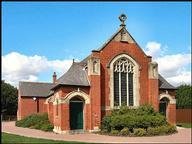Quiz Answer Key and Fun Facts
1. What statement of faith is presented at the beginning of "The Book of Concord"?
2. Which section was originally presented in two languages?
3. Which part of "The Book of Concord" explains the first commandment that "we are to fear, love, and trust God above all things"?
4. Which piece was written after Martin Luther's death?
5. From which document will you find this quote, "...God be praised, a seven-year-old child knows what the church is: holy believers and 'the little sheep who hear the voice of their shepherd.'"
6. After "The Augsburg Confession" was presented, a confutation was written in rebuttal by the Roman Catholic theologians. "The Apology of the Augsburg Confession" was a response to this rebuttal. Which of the following articles has no elaborate defense because both sides were in agreement?
7. Which of the following is not a formal section of the "Large Catechism"?
8. Which reformer authored "The Treatise on the Power and Primacy of the Pope"?
9. In which section in "The Formula of Concord" would one find an article on free will?
10. Which portion of "The Book of Concord" was re-edited and published by its author with the title, "Variata"?
Source: Author
albinerhawk
This quiz was reviewed by FunTrivia editor
CellarDoor before going online.
Any errors found in FunTrivia content are routinely corrected through our feedback system.
